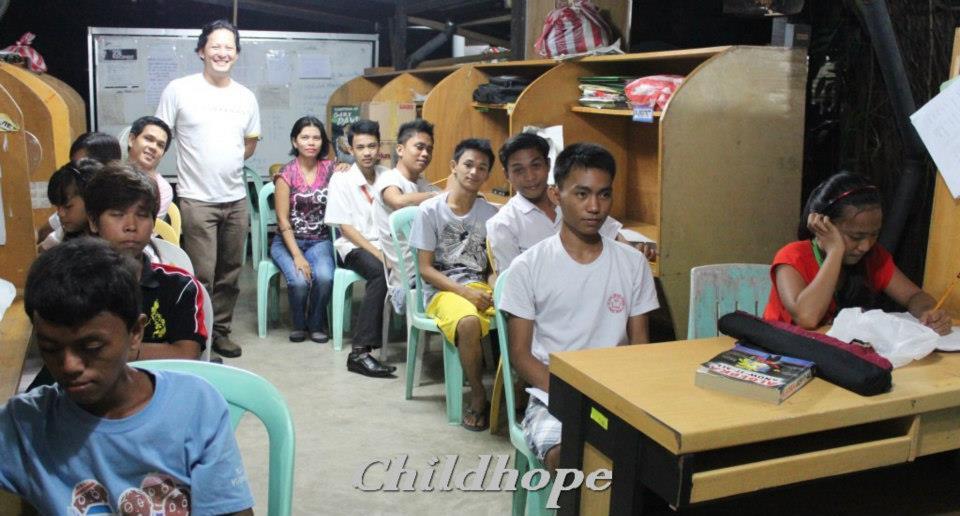Childhope in the Philippines, engaged for street children
By Milena Rampoldi and Denise Nanni,
ProMosaik. In the following our interview with the organisation Childhope inthe Philippines. We talked to Dr. Herbert Quilon Carpio, Executive Director and
asked him about the situation of the street children in the Philippines, and
about how its organisation acts to support them. Would like to thank him for
his detailed answers and for the photos he sent us.
ProMosaik. In the following our interview with the organisation Childhope inthe Philippines. We talked to Dr. Herbert Quilon Carpio, Executive Director and
asked him about the situation of the street children in the Philippines, and
about how its organisation acts to support them. Would like to thank him for
his detailed answers and for the photos he sent us.
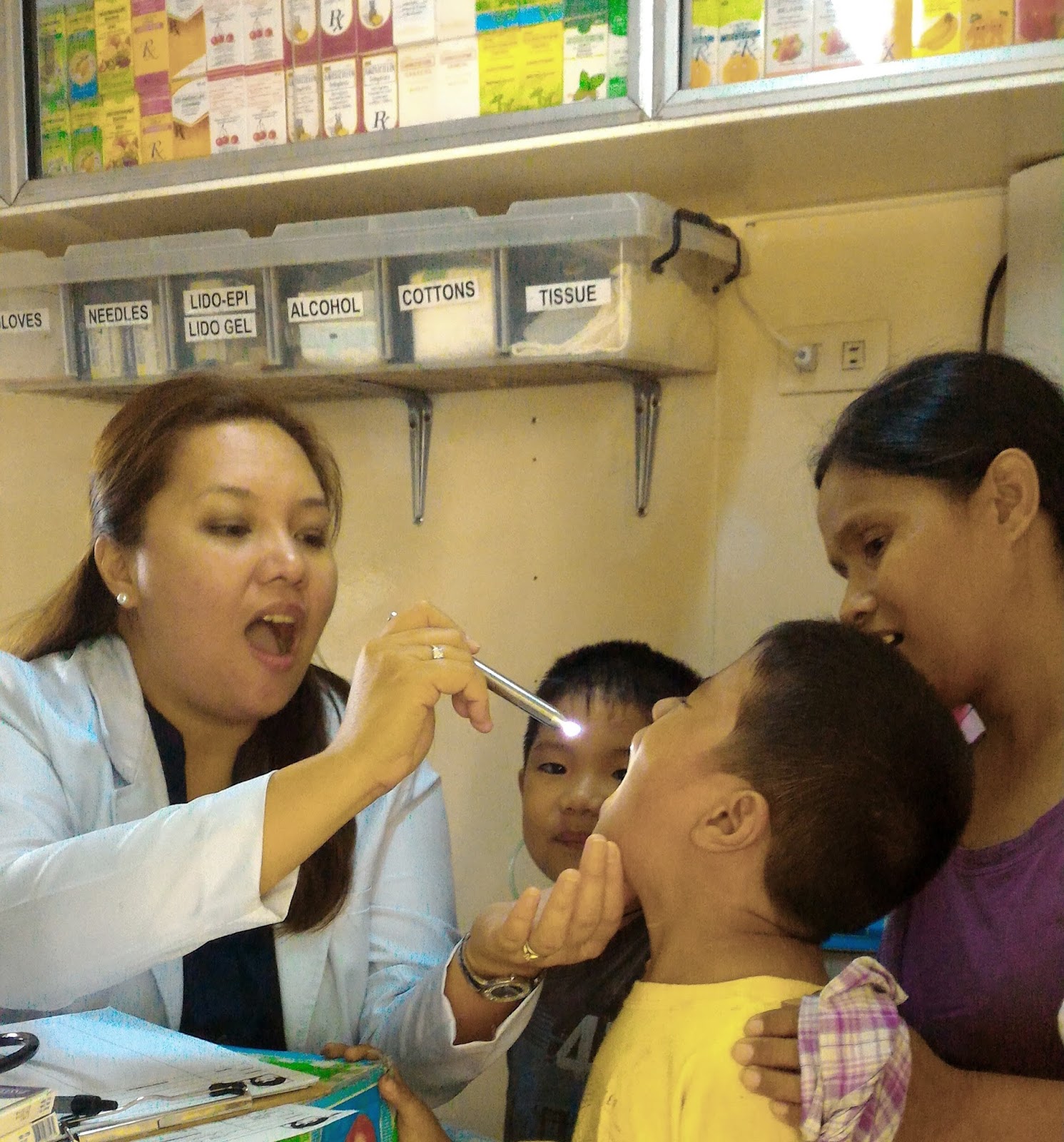
What is
the current situation related to street children in the Philippines?
In a study conducted by UNICEF and the
Philippine Institute for Development Studies (PIDS), 44% or about 12.8 million
Filipino children under the age of 15 are impoverished. The study presents that
these children suffer from multiple dimensions of poverty, particularly
deprivations in health and education, food and shelter, to name a few.
Philippine Institute for Development Studies (PIDS), 44% or about 12.8 million
Filipino children under the age of 15 are impoverished. The study presents that
these children suffer from multiple dimensions of poverty, particularly
deprivations in health and education, food and shelter, to name a few.
According to PIDS, 500,000 children in Metro
Manila live in poverty, forcing them to help earn for their families or fend
for themselves on the streets, exposing them to harsh conditions, making them
prone to abuse and vulnerable to illnesses.
Manila live in poverty, forcing them to help earn for their families or fend
for themselves on the streets, exposing them to harsh conditions, making them
prone to abuse and vulnerable to illnesses.
How does
your organization help street children?
your organization help street children?
In response, Childhope Philippines works to
promote and uphold the United Nations Convention on the Rights of the Child,
focusing on these disadvantaged children. It envisions a future wherein street
children become responsible, productive and respected members of society fully
exercising their rights and duties so as to achieve their full potential as
human beings and upholding the rights of others with dignity and worth.
promote and uphold the United Nations Convention on the Rights of the Child,
focusing on these disadvantaged children. It envisions a future wherein street
children become responsible, productive and respected members of society fully
exercising their rights and duties so as to achieve their full potential as
human beings and upholding the rights of others with dignity and worth.
Childhope commits to the following causes:
·
Advocate
with the different sectors of society so they can gain awareness and
understanding of the plight and potentials of the street children and to
encourage the society to move into action for their cause;
Advocate
with the different sectors of society so they can gain awareness and
understanding of the plight and potentials of the street children and to
encourage the society to move into action for their cause;
·
Uphold
the rights of each child through educational opportunities under its banner
program, the Street Education Program, that include spiritual formation, sports
and recreational activities and values clarification among children themselves;
Uphold
the rights of each child through educational opportunities under its banner
program, the Street Education Program, that include spiritual formation, sports
and recreational activities and values clarification among children themselves;
·
Provide
protection for the children from any forms of abuse, exploitation and neglect;
Provide
protection for the children from any forms of abuse, exploitation and neglect;
·
Facilitate
the development and recovery of street children through educational assistance,
psychosocial support and opportunities towards empowerment to have a productive
life for the future; and
Facilitate
the development and recovery of street children through educational assistance,
psychosocial support and opportunities towards empowerment to have a productive
life for the future; and
·
Help
them realize that they are valuable members of society as they struggle towards
positive change and mainstream them to their relatives, families, and the
society in general.
Help
them realize that they are valuable members of society as they struggle towards
positive change and mainstream them to their relatives, families, and the
society in general.
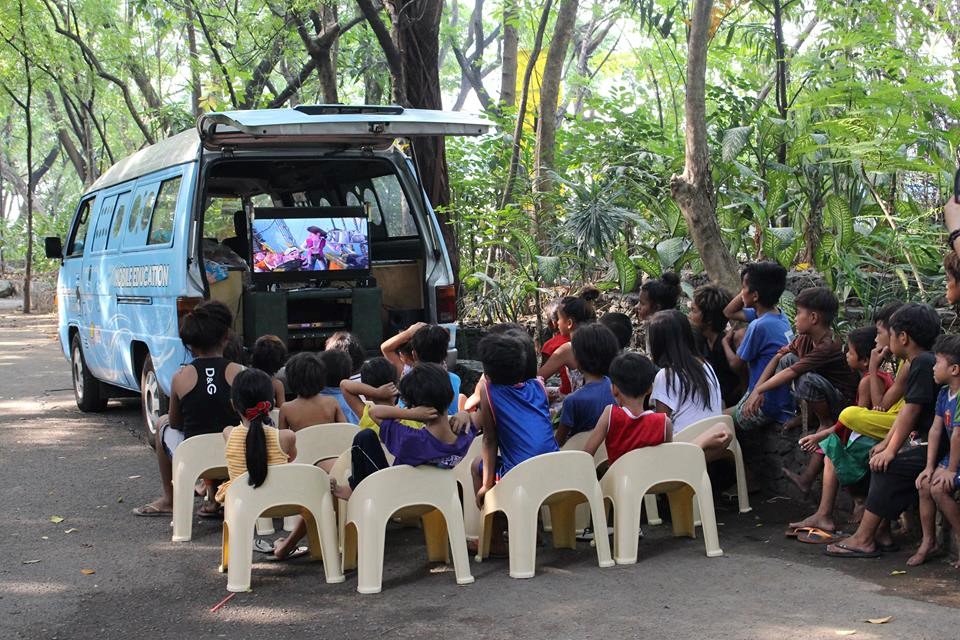
As of the moment, we have fourteen (14) Street
Educators / Social Workers who reach out and provide assistance to street
children, male and female, from ages 7-18 years of age from more than fifteen
(15) identified areas in five (5) major cities of Metro Manila, namely: Manila,
Pasay, Paranaque, Caloocan and Quezon City. These children come from any of the
three categories / groups of street children:
Educators / Social Workers who reach out and provide assistance to street
children, male and female, from ages 7-18 years of age from more than fifteen
(15) identified areas in five (5) major cities of Metro Manila, namely: Manila,
Pasay, Paranaque, Caloocan and Quezon City. These children come from any of the
three categories / groups of street children:
·
Children
of the Street / Completely abandoned and neglected children – Family ties exist
but in most cases have not been sustained; in some cases, their former home is
visited infrequently. However, by virtue of having severed all ties with a
biological family, they are entirely on their own, not just for material but
also for psychological survival, and therefore require a very different
approach. This group is given the highest priority attention by street
educations.
Children
of the Street / Completely abandoned and neglected children – Family ties exist
but in most cases have not been sustained; in some cases, their former home is
visited infrequently. However, by virtue of having severed all ties with a
biological family, they are entirely on their own, not just for material but
also for psychological survival, and therefore require a very different
approach. This group is given the highest priority attention by street
educations.
·
Children
of street families –Children in this group see the street as their home and it
is there that they seek shelter, food, and a sense of family. These children
literally live on the streets with their families. This group is second
priority attention.
Children
of street families –Children in this group see the street as their home and it
is there that they seek shelter, food, and a sense of family. These children
literally live on the streets with their families. This group is second
priority attention.
·
Children
on the street – the largest of the three (3) categories and consists primarily
of working children who still go home daily to families. Their focus in life is still the home, many
attend school, most return home at the end of each working day, and most will
have a sense of belonging to the local community in which their home is
situated. This group is not a target group of Childhope but is not excluded
entirely.
Children
on the street – the largest of the three (3) categories and consists primarily
of working children who still go home daily to families. Their focus in life is still the home, many
attend school, most return home at the end of each working day, and most will
have a sense of belonging to the local community in which their home is
situated. This group is not a target group of Childhope but is not excluded
entirely.
Among the three (3) categories of street, the
children of the streets or the abandoned and neglected street-based /
street-living children are given highest priority.
children of the streets or the abandoned and neglected street-based /
street-living children are given highest priority.
The children of street families are also be
provided assistance in many forms such as counseling and relief goods (i.e.,
rice, canned goods, used clothing and many others).
provided assistance in many forms such as counseling and relief goods (i.e.,
rice, canned goods, used clothing and many others).

Tell us about your Street Education Program.
Childhope’s banner program is the
Outreach/Protection and Education on the Streets Program or simply, the Street
Education Program. It has 4 major components which are created in consultation
and participation of the children beneficiaries in order to provide for their
holistic development:
Outreach/Protection and Education on the Streets Program or simply, the Street
Education Program. It has 4 major components which are created in consultation
and participation of the children beneficiaries in order to provide for their
holistic development:
a.
Alternative Education, which
includes learning sessions for the following:
Alternative Education, which
includes learning sessions for the following:
i.
Mobile
Education Vans and the Mobile School Cart sessions focusing on 11 modules: UN
Convention on the Rights of the Child, Values Education and Spiritual
Formation, Primary Health care, Substance Abuse Prevention Education, Personal
Safety and Protective Behavior, STI/HIV/AIDS, Gender Sensitivity, Adolescent
Sexuality, Paralegal Education, and Life Skills and Life Goals Planning.
ii.
classes
under the DepEd-accredited Alternative
Learning System (ALS) whereby street children and youth learn through
modules guided by street educators trained as Instructional Managers
iii.
Vocational/Technical Skills Training
which aims to provide the participants with technical/ vocational skills
training opportunities that will help them to develop service/ technical skills
and positive income generating activities which will allow them to financially
support themselves
iv.
Financial Education, which
teaches the participants the value of money, earning a decent living, and the
value/habit of saving for the future;
b.
Psychosocial Interventions, which
includes counselling beneficiaries and provision of assistance to help them cope
up with the stresses and challenges that they encounter while
learning/training;
Psychosocial Interventions, which
includes counselling beneficiaries and provision of assistance to help them cope
up with the stresses and challenges that they encounter while
learning/training;
c.
Health and Medical services, which
provides primary preventive medical care and consultations/treatments to ensure
that the children are healthy and in full physical capacity to learn; and
Health and Medical services, which
provides primary preventive medical care and consultations/treatments to ensure
that the children are healthy and in full physical capacity to learn; and
d.
Skills Development, where
beneficiaries are trained in leadership, computer literacy, sports, the arts
and other skills that will help them nurture the good traits they possess and
apply the values they have learned in life planning.
Skills Development, where
beneficiaries are trained in leadership, computer literacy, sports, the arts
and other skills that will help them nurture the good traits they possess and
apply the values they have learned in life planning.
Street educators are frontline/outreach field
workers and role models who facilitate sessions among street children. They go
to their assigned areas and conduct sessions five days a week (Tuesdays to
Saturdays, 4:00pm to 9:00pm) among the street children to facilitate their
protection, education, and eventual decision to seek temporary shelter, or to
return to their families or relatives, whenever feasible.
workers and role models who facilitate sessions among street children. They go
to their assigned areas and conduct sessions five days a week (Tuesdays to
Saturdays, 4:00pm to 9:00pm) among the street children to facilitate their
protection, education, and eventual decision to seek temporary shelter, or to
return to their families or relatives, whenever feasible.
One integral component of the Street Education
Program is the Mobile Education Van (MEV) which provides opportunities for
street children to learn in a creative and interactive manner. The various
tools utilized in the facilitation of the MEV sessions, such as the
presentation of ETV materials, storytelling, fun games, sports and other
recreational activities, make learning fun and easy for our street children
participants. Focused-group discussions (FGDs) are also facilitated among
children to assess their learnings based on the sessions they attended as well
as their application of these learnings in their everyday life. The use of
these tools enables the Street Educators to encourage and sustain the interest
and participation of the street children.
Program is the Mobile Education Van (MEV) which provides opportunities for
street children to learn in a creative and interactive manner. The various
tools utilized in the facilitation of the MEV sessions, such as the
presentation of ETV materials, storytelling, fun games, sports and other
recreational activities, make learning fun and easy for our street children
participants. Focused-group discussions (FGDs) are also facilitated among
children to assess their learnings based on the sessions they attended as well
as their application of these learnings in their everyday life. The use of
these tools enables the Street Educators to encourage and sustain the interest
and participation of the street children.
Childhope also responds to the medical and
health needs of the street children through its Mobile Health Clinic (MHC)
Project, which is managed by a full-time Medical Doctor. The mobile clinic was
donated in 2006 by the Rotary Club of Honolulu and Paco, complete with the
necessary medical equipment to address the health and medical problems of the
street children in Metro Manila. These children often encounter difficulties in
receiving assistance from public health centers and hospitals because these
public facilities are usually overcrowded with a large number of
community-based indigent patients, and are likewise unable to provide free or
subsidized medicines.
health needs of the street children through its Mobile Health Clinic (MHC)
Project, which is managed by a full-time Medical Doctor. The mobile clinic was
donated in 2006 by the Rotary Club of Honolulu and Paco, complete with the
necessary medical equipment to address the health and medical problems of the
street children in Metro Manila. These children often encounter difficulties in
receiving assistance from public health centers and hospitals because these
public facilities are usually overcrowded with a large number of
community-based indigent patients, and are likewise unable to provide free or
subsidized medicines.
During the MHC operations, the Medical Doctor is
assisted by Junior Health Workers (JHW’s) – selected street children who are
trained to administer first aid and appropriate home remedies, conduct health-oriented
one-on-one and group discussion, and accompany/refer sick street children to
public health centers and hospitals even without the presence of the MHC Doctor
or Street Educators. Aside from carrying out these activities, the JHW’s also
assist the Street Educators in facilitating sessions on Primary Health Care
among their fellow street children. As an incentive for their voluntary work,
these JHW’s are supported with educational assistance in formal school or in
the Basic Education Alternative Learning System (ALS) Program.
assisted by Junior Health Workers (JHW’s) – selected street children who are
trained to administer first aid and appropriate home remedies, conduct health-oriented
one-on-one and group discussion, and accompany/refer sick street children to
public health centers and hospitals even without the presence of the MHC Doctor
or Street Educators. Aside from carrying out these activities, the JHW’s also
assist the Street Educators in facilitating sessions on Primary Health Care
among their fellow street children. As an incentive for their voluntary work,
these JHW’s are supported with educational assistance in formal school or in
the Basic Education Alternative Learning System (ALS) Program.
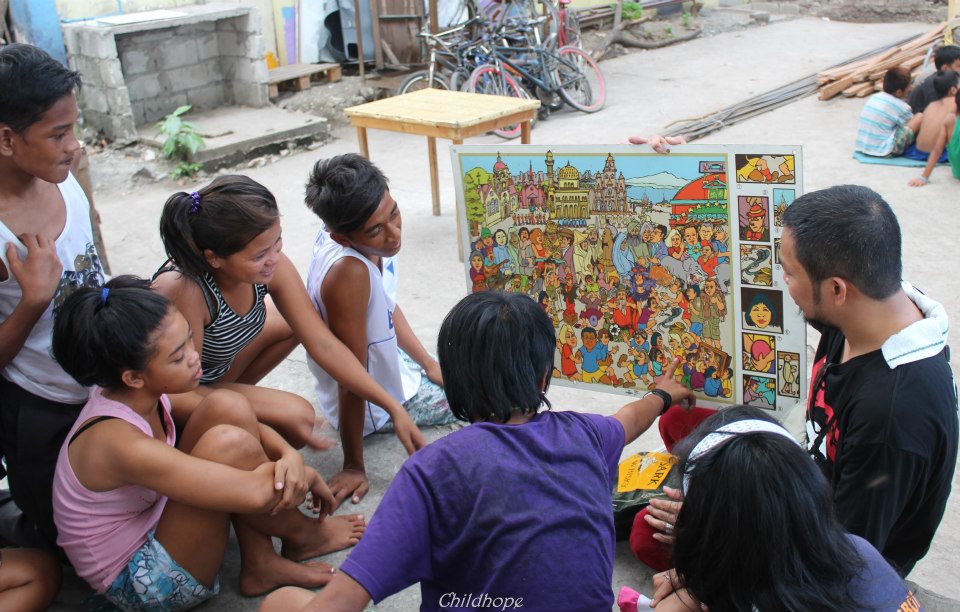
Do you
carry out any activity in order to promote the social rehabilitation of street
children?
carry out any activity in order to promote the social rehabilitation of street
children?
Social Workers/street educators conduct
individual and group counselling sessions among participants to help them
reflect on their situation and eventually develop positive life plans and life
goals. These sessions happen continuously throughout the year and are in-sync
with the education and skills development activities in order to reinforce
positive behavior and avoid relapses/regression. These counselling sessions
also help motivate participants to plan and reach their plans for a better life
situation. The social workers also facilitate referrals for temporary shelters
and/or reintegration with family and relatives, whenever feasible. They also
counsel the families and relatives of the street child in preparation for
reintegration.
individual and group counselling sessions among participants to help them
reflect on their situation and eventually develop positive life plans and life
goals. These sessions happen continuously throughout the year and are in-sync
with the education and skills development activities in order to reinforce
positive behavior and avoid relapses/regression. These counselling sessions
also help motivate participants to plan and reach their plans for a better life
situation. The social workers also facilitate referrals for temporary shelters
and/or reintegration with family and relatives, whenever feasible. They also
counsel the families and relatives of the street child in preparation for
reintegration.
Moreover, Childhope’s Vocational Technical Skills Training aims to
provide the participants with opportunities that will help them to develop service
/ technical skills and positive income generating activities which will allow
them to financially support themselves or their families, especially when they
finally decide to leave the streets. It was designed through consultation and
focused-group discussions with the Street Educators and the older street
children participants.
provide the participants with opportunities that will help them to develop service
/ technical skills and positive income generating activities which will allow
them to financially support themselves or their families, especially when they
finally decide to leave the streets. It was designed through consultation and
focused-group discussions with the Street Educators and the older street
children participants.
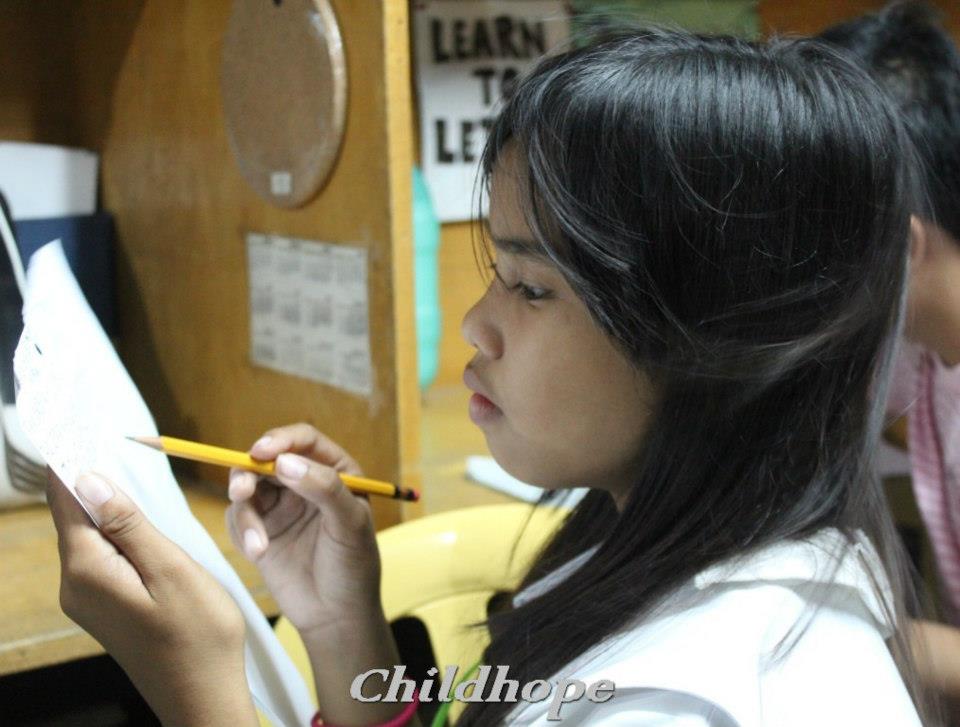
Do you
cooperate with local authorities and institutions? If yes, how?
cooperate with local authorities and institutions? If yes, how?
Childhope’s key partners for the implementation
of this program are as follows:
of this program are as follows:
· – Government
agencies that provide capability/skills building trainings
agencies that provide capability/skills building trainings
· – Different
Civil Society Groups
Civil Society Groups
· – Other
Non-Government Organizations (NGOs) for Children’s Rights
Non-Government Organizations (NGOs) for Children’s Rights
· – Local
Government Units (LGUs) where Childhope operates its programs and services
among the street children.
Government Units (LGUs) where Childhope operates its programs and services
among the street children.
These partnerships help us to promote the rights
of children, especially street children, in order to influence the local laws/
policies and improve existing programs and services for street and urban poor
children.
of children, especially street children, in order to influence the local laws/
policies and improve existing programs and services for street and urban poor
children.
Childhope is also lobbying with the LGUs to take
on the responsibility of actively advocating at the barangay level for child
rights and to participate/ facilitate in the organization of Barangay Councils
for the Protection of Children and implement child-friendly programs and
services. Childhope is also cultivating strategies for partnership with
government agencies like TESDA or TESDA-accredited institutions for training
our beneficiaries for free or at a minimal cost. We will also engage volunteers
to help facilitate our program activities.
on the responsibility of actively advocating at the barangay level for child
rights and to participate/ facilitate in the organization of Barangay Councils
for the Protection of Children and implement child-friendly programs and
services. Childhope is also cultivating strategies for partnership with
government agencies like TESDA or TESDA-accredited institutions for training
our beneficiaries for free or at a minimal cost. We will also engage volunteers
to help facilitate our program activities.
